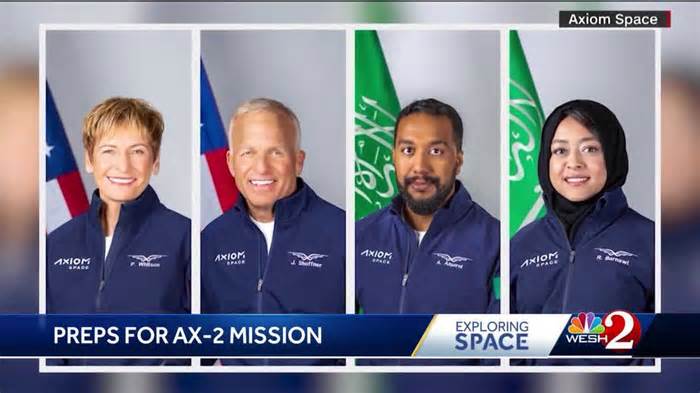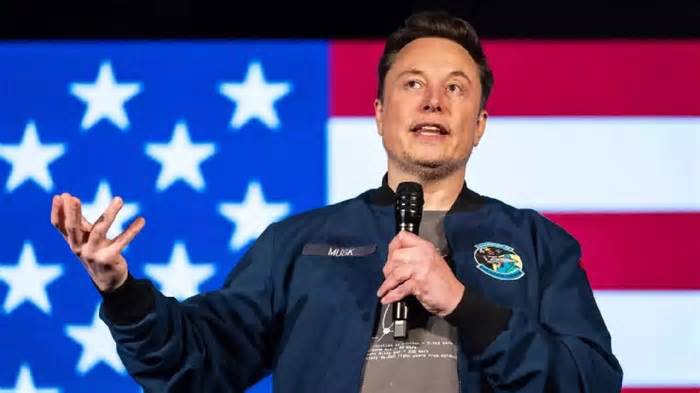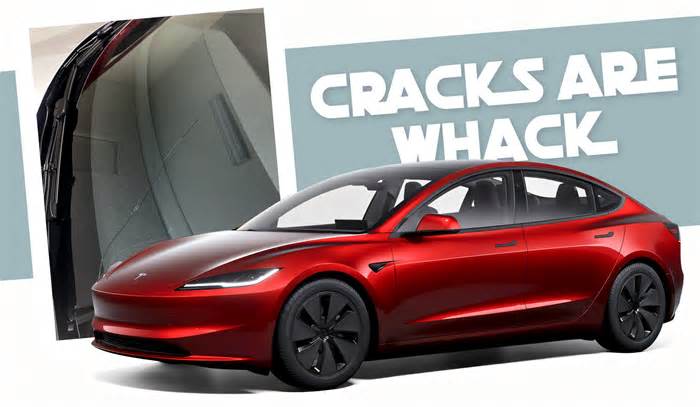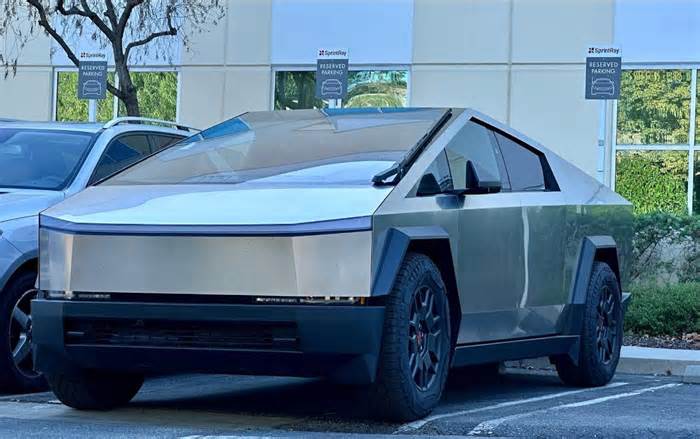
AI, the Future of the DoD, and Elon Musk
- by The Cipher Brief
- Nov 12, 2024
- 0 Comments
- 0 Likes Flag 0 Of 5

By Walter Pincus
Pulitzer Prize Winning Journalist Walter Pincus is a contributing senior national security columnist for The Cipher Brief. He spent forty years at The Washington Post, writing on topics that ranged from nuclear weapons to politics. He is the author of Blown to Hell: America's Deadly Betrayal of the Marshall Islanders. Pincus won an Emmy in 1981 and was the recipient of the Arthur Ross Award from the American Academy for Diplomacy in 2010. He was also a team member for a Pulitzer Prize in 2002 and the George Polk Award in 1978.
OPINION – “I think the thing that’ll be really important is how you make them [new unmanned aircraft], because this is another thing the [Pentagon] acquisition system doesn’t do. It thinks about the process, the factory, after the thing [an unmanned aircraft] has been designed, and often we don’t like the results. We end up with something that’s way too expensive, or has a bespoke supply chain, or unique tooling, or artisan craftsmen that you can’t scale. And for CCA [the Pentagon’s unmanned Collaborative Combat Aircraft program] to have the impact on the battlefield that was originally hoped for, it’s got to be made in a very different way than the high-touch labor, high-cost production of current defense programs.”
That was Dr. Will Roper, a forward-thinking, former top Defense Department (DoD) official, speaking November 4 at the Center for Strategic and International Studies (CSIS) on The Past, Present, and Future of DoD AI [Artificial Intelligence] and [weapons] Autonomy.
Roper described the slow growth of AI technology within the DoD, and his view that the future would involve not only the building and testing of an unmanned aircraft on a computer, but also to first build and test via computer what he called “the factory,” by which he meant the machinery that used to build the aircraft.
Roper also referred several times to Elon Musk as the innovator of this computer-based manufacturing process, saying at one point, “So I almost feel like you got to…take the approach that Elon recommended, where he said the factory’s the product. He said the factory is the product here, and then you build the best CCA.”
First, a little background about Roper – and then more about Elon Musk below.
An AI pioneer
Roper was a leader inside DoD for using technology in missile defense and later for the use of AI, initially to modernize weapons maintenance and then to revolutionize the multi-year, Pentagon weapons acquisition process.
Roper came to the Pentagon in 2010 as the Acting Chief Architect at the Missile Defense Agency, where he developed 11 new systems, including the current European Defense architecture. In 2012, Roper founded DoD’s Strategic Capabilities Office (SCO), a once-classified innovation office set up to solve the military’s innovation problems. Roper’s SCO pushed aggressive contracting for unconventional, forward-looking approaches such as hypervelocity artillery, multi-purpose missiles, and autonomous fast boats.
At the same time, he started Project Maven, the service’s first AI project, and while he was promoted in 2018 to Assistant Secretary of the Air Force for Acquisition, Technology, and Logistic, Roper told the CSIS audience that over time, Project Maven “really became a huge initiative with over 3,000 people supporting it across the different branches of the service.”
But that also became a period of study for DoD, or as Roper put it, “not just say we’re going to do AI, but to learn how to do it. And I think a lot of what we discovered during that period is we weren’t ready for AI because we didn’t have the equivalent of the internet in the military.”
Roper continued, “We discovered you’ve got to do a lot of [computer] infrastructure things first before you get to the fun of AI. So it’s kind of like we were – we were wanting to read The Odyssey, but we hadn’t taken the time to learn Greek. Well, first things first. Fundamentals first. And we didn’t have them in the DoD at that time.”
Back then, Roper said, “We had a set of three tenets for what we thought future warfare would be like. The first was that all the domains of war would blur. You would not have armies fighting armies…You see a lot of the early programs, like the one – I think it was [then-Defense] Secretary [Ashton] Carter announced here at CSIS, [which] was like trying to reprogram Army weapons so that they could go after ships. Well, this was viewed as pretty controversial at the time.”
The second tenet, Roper said, was dropping the idea of fighting with expensive new weapons that peer opponents could match, but rather developing “things we could lose. We didn’t really have those in the military; attritable systems, expendable systems, that would need to be networked with high-end systems – airplanes, ships and ground vehicles. So you get the benefit of the high-tech military tech, but also the ability to have sacrificial pawns on the chessboard that you can lose to ultimately win.”
The third tenet, Roper said, “was that data would be a strategic resource. It’d be the lifeblood of the military. We would be using it as – almost like a kind of ammo, that we would need to have more than the other side and be able to collect it during the battle so that we could train autonomy and AI, which is really where dominance would come from.”
Back in 2016, Roper said, the idea for unmanned aircraft autonomy was of the “loyal wingman,” a handful of unmanned aircraft flying beside a controlling, piloted F-35 fighter bomber.
But Roper said thinking changed, and “if you happened to have something that was low-cost and autonomous, you wouldn’t want it flying beside you. You wanted it ahead of you, taking on the risk and taking on the jobs that are too dangerous for a person to do. And, of course, if it’s cheaper than what they’re threatening, you’re now doing a cost-of-position strategy, which I always thought was a good idea.”
Cost-of-position strategy is where, for example, one side’s missile defense weapons cost much more than the other side’s offensive missiles, so there is a greater tendency to develop and/or deploy more offensive weapons to raise the cost for the defense.
Red v. blue – and a need for new thinking
Roper brought up another strategy. “Playing red [meaning offense] is always better than trying to defend blue, and that was a common statement…In SCO we would think red. We would not try to solve the problems that an adversary was handing to us. They were their problems they wanted us to have.”
Then Roper pointed out the old, traditional Pentagon reflexive attitude: “As there’s a new threat let’s beat the threat.”
Roper then added his own view: “Well, that’s playing to their game. When you get faced with a new threat, the question should be, what can I do that gives me the ability to not just continue doing the mission but do it on my terms, on my playing board, and I found that that wasn’t thinking that happened anywhere in the Pentagon.”
To challenge that thinking, Roper said his interest turned to programs that were inexpensive enough to lose, but which multiplied the number of things on the adversary’s radar screens so they didn’t know whether it was an unmanned aerial vehicle (UAV) with sensors, or a UAV carrying weapons, or a piloted F-35.
“It was controversial,” Roper said, “because it took away from, in some views, the mystique of the pilot and the white scarf and everything being needed being in their brain, and really brought in that warfare is going to increasingly go digital. And AI is going to be making more and more decisions.”
AI at “war-relevant speeds”
Although Roper left the Pentagon in 2021, he told the CSIS audience the DoD needed to accelerate “getting the [digital] infrastructure completely done so we can go build an internetized military that can operationalize AI at war-relevant speeds. And right now we can’t. But there’s a new playbook to write there.”
Roper today is founder and CEO of Istari Digital, a firm which promises on its website “to revolutionize the field of digital engineering, where all technology is created, tested, and even certified through modeling and simulation.”
Last year, Istari won a $19 million Air Force contract to create, test and flight-certify a modified version of Lockheed Martin’s X-56A, a modular unmanned aerial vehicle that is being designed to explore high-altitude, long-endurance flight technologies for use in future military unmanned reconnaissance aircraft.
The ability to accomplish flight certification of a digital aircraft before it’s physically built would open the way for future aircraft development to be done at the rapid pace of software engineering. In effect, digital innovation would be driving physical reality.
The Air Force did not immediately provide comment on the potential for digital certification, but Istari’s Air Force contract calls for “digital-first airworthiness,” and that work is scheduled to be completed by December 2025.
The Musk factor
About halfway through his presentation, Roper again talked about Elon Musk, this time in terms of SpaceX, Musk’s company that designs, manufactures and launches satellites, advanced rockets and spacecraft.
Roper said what “made SpaceX and many other innovative companies so much faster, so much cheaper, is that they got to credible feedback data earlier, which helped them improve things” as development continued. As SpaceX worked on designing a satellite, for example, the AI system was testing the operation of each part and immediately feeding back the results.
Roper said, “If you think about, like, a DOD program, it assumes success. That’s the dumbest thing you can assume when you’re creating something new. You should assume failure and have a process that can rapidly incorporate, learn and improve.”
Roper also spoke of Musk’s SpaceX “investing in itself, in automating its own internal processes, so that there were people who were working for the [outside] customer, but there were also people in SpaceX working for SpaceX to make the entire enterprise together. In fact, the programmers who were in SpaceX, working for SpaceX, were among the most talented they had because everything they did made everyone better, like a tide raising all boats.”
“That,” Roper said, “was a big inspiration for me, because when I saw what they were doing, it led me to believe that we could ultimately have a lot of what happens in the bureaucracy – checking mil[itary] standards, checking integration, checking a thousand things – that we could eventually turn that into automated software. “
I note Roper’s mention of Musk’s business operational techniques because in a September speech at the Economic Club of New York, President-elect Donald Trump said that he would create a government efficiency commission “tasked to conduct a complete financial and performance audit of the entire federal government and making recommendations for drastic reforms. We need to do it.”
Trump added that “Elon has agreed to head that.”
I assume one of the Musk commission’s targets will be the Defense Department.
The Cipher Brief is committed to publishing a range of perspectives on national security issues submitted by deeply experienced national security professionals. Opinions expressed are those of the author and do not represent the views or opinions of The Cipher Brief.
Have a perspective to share based on your experience in the national security field? Send it to
[email protected]
Please first to comment
Related Post
Stay Connected
Tweets by elonmuskTo get the latest tweets please make sure you are logged in on X on this browser.
Sponsored
Popular Post
tesla Model 3 Owner Nearly Stung With $1,700 Bill For Windshield Crack After Delivery
33 ViewsDec 28 ,2024
Middle-Aged Dentist Bought a Tesla Cybertruck, Now He Gets All the Attention He Wanted
32 ViewsNov 23 ,2024






 Energy
Energy


















